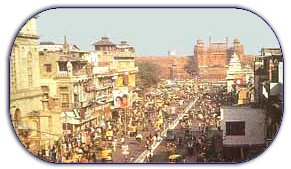Major tourist attractions in New Delhi:
The following are the important tourist spots in New Delhi –
Historical:
Red Fort –
a symbol of the might of the mughuls, this fort was built by Shahjahan in the 17th century, and continued to be the seat of the Indian government till its final downfall after the famous siege of Delhi during the 1857 uprising against the British. The tricolor flutters proudly on the fort today and the prime minister addresses the nation from here on Independence Day.
Qutb Complex, Mehrauli –
this complex has many well known New Delhi tourist attractions. The most famous is of course the Qutb Minar, which is a marvel of medieval architecture and a declared world heritage site. The other attractions of this complex include a 4th century iron pillar, the Quwwat-ul-Islam Mosque, and the Ala-al Darwazaa (gateway).
Humayun’s tomb –
this is one of the best and earliest examples of tomb architecture started by the mughuls in India. The grand scale and intricate decorations of the monument signify the style that reached its pinnacle in the Taj Mahal, built a century later.
There are several other historic sites in and around New Delhi. These include the Jantar mantar, Siri Fort, Tughlaqabad, the Old fort, Safdarjung’s tomb and several tanks. The Delhi ridge is also a very important place, telling us the history of the bloody battle of Delhi in 1857.
Government Buildings:
The government buildings include structures built by the British or the Indian government after independence that are used for the purpose of governance of the country. The most famous of these are the presidential residence, called the Rashtrapari Bhavan and the Parliament House. Both these structures were built before independence by the British. The road leading to the Rashtrapari Bhavan is known as Rajpath and is the route taken by the annual Republic Day Parade. The parliament house is a magnificent circular structure. At night, these spots are lit up and present a spectacular sight.
Religious Buildings:
New Delhi is home to a large number of people belonging to various communities and following different religions. The city is, therefore home to some important religious spots that are also considered as major tourist attractions in New Delhi. The most prominent among these are the Jumma Masjid, the Akshardham temple, and the Lotus temple. There are many well known churches and gurdwaras (Sikh place of Worship) in New Delhi.
Others:
Some of the other must visit tourist spots in New Delhi include Mahatma Gandhi memorial at Raj Ghat, the Indira Gandhi Memorial, Residence of Jawaharlal Nehru, the Railway Museum, India gate, Lodhi Gardens, Chandni Chowk, Connaught Place, and the Delhi zoo. The markets, shopping malls and parks of Delhi are also among its tourist attractions.
Touristplacesinindia.com offers online information about the tourist attractions in New Delhi other tourist places in India.
The following are the important tourist spots in New Delhi –
Historical:
Red Fort –
a symbol of the might of the mughuls, this fort was built by Shahjahan in the 17th century, and continued to be the seat of the Indian government till its final downfall after the famous siege of Delhi during the 1857 uprising against the British. The tricolor flutters proudly on the fort today and the prime minister addresses the nation from here on Independence Day.
Qutb Complex, Mehrauli –
this complex has many well known New Delhi tourist attractions. The most famous is of course the Qutb Minar, which is a marvel of medieval architecture and a declared world heritage site. The other attractions of this complex include a 4th century iron pillar, the Quwwat-ul-Islam Mosque, and the Ala-al Darwazaa (gateway).
Humayun’s tomb –
this is one of the best and earliest examples of tomb architecture started by the mughuls in India. The grand scale and intricate decorations of the monument signify the style that reached its pinnacle in the Taj Mahal, built a century later.
There are several other historic sites in and around New Delhi. These include the Jantar mantar, Siri Fort, Tughlaqabad, the Old fort, Safdarjung’s tomb and several tanks. The Delhi ridge is also a very important place, telling us the history of the bloody battle of Delhi in 1857.
Government Buildings:
The government buildings include structures built by the British or the Indian government after independence that are used for the purpose of governance of the country. The most famous of these are the presidential residence, called the Rashtrapari Bhavan and the Parliament House. Both these structures were built before independence by the British. The road leading to the Rashtrapari Bhavan is known as Rajpath and is the route taken by the annual Republic Day Parade. The parliament house is a magnificent circular structure. At night, these spots are lit up and present a spectacular sight.
Religious Buildings:
New Delhi is home to a large number of people belonging to various communities and following different religions. The city is, therefore home to some important religious spots that are also considered as major tourist attractions in New Delhi. The most prominent among these are the Jumma Masjid, the Akshardham temple, and the Lotus temple. There are many well known churches and gurdwaras (Sikh place of Worship) in New Delhi.
Others:
Some of the other must visit tourist spots in New Delhi include Mahatma Gandhi memorial at Raj Ghat, the Indira Gandhi Memorial, Residence of Jawaharlal Nehru, the Railway Museum, India gate, Lodhi Gardens, Chandni Chowk, Connaught Place, and the Delhi zoo. The markets, shopping malls and parks of Delhi are also among its tourist attractions.
Touristplacesinindia.com offers online information about the tourist attractions in New Delhi other tourist places in India.
- Red Fort
- Jama Masjid
- Chandni Chowk
- Humayun's Tomb
- India Gate
- Nizamuddin's Tomb
- Lakshmi Narayan Temple
- Mirza Ghalib's Tomb
- North and South Block
- Parliament House
- Purana Qila - Old Fort
- Rashtrapati Bhavan
- Safdarjung's Tomb
- Qutab Minar
- Bahai Temple
- Memorials in Delhi
- Parks and Gardens in Delhi
- Museums in Delhi
- Markets in Delhi
Tourist Places India.com offers online information on Delhi and other cities of India . To avail this facility or for more information on the hotels of India, please, enter your queries in the form below
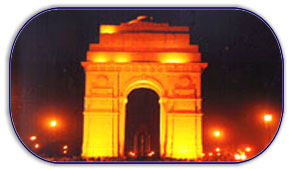
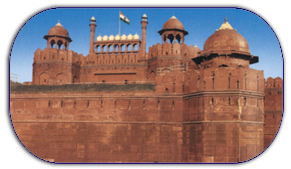
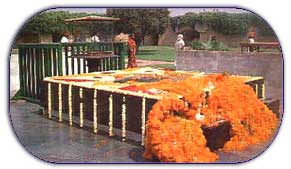
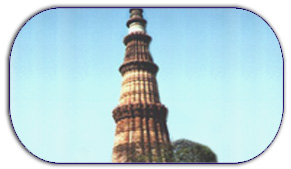
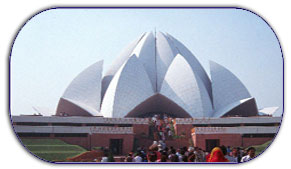












 Humayun's Tomb
Humayun's Tomb
 Safdarjung's Tomb
Safdarjung's Tomb
 Lakshmi Narayan Mandir
Lakshmi Narayan Mandir